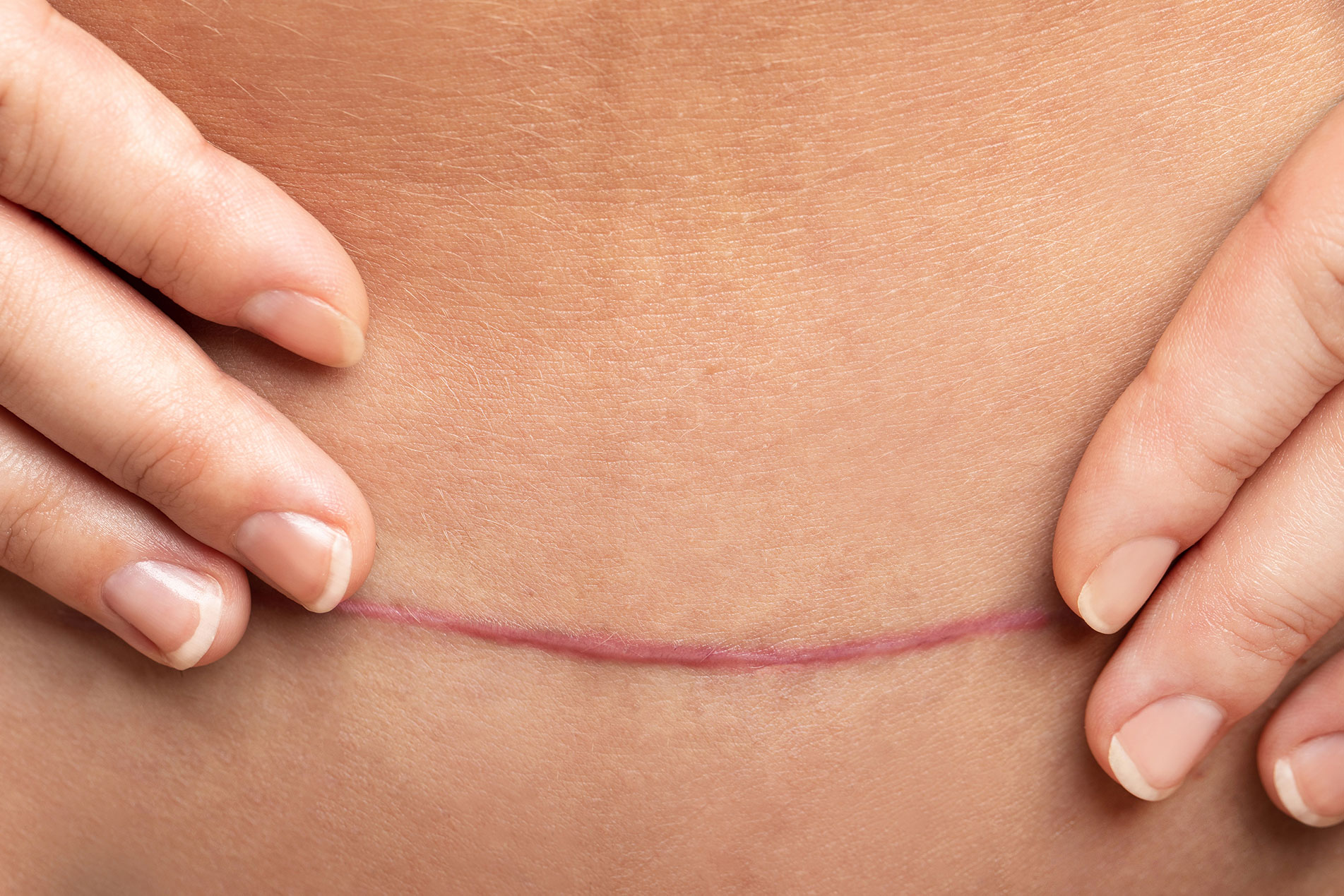Scars on the skin can often be a source of self-consciousness and reduced confidence, affecting our overall appearance. Whether they stem from severe acne, injuries, or surgical procedures, seeking effective scar treatment is essential for achieving clear and smooth skin you desire.
When an injury occurs, the body’s natural healing process kicks in, resulting in the formation of a scar. Within the second layer of the skin, called the dermis, collagen fibers are produced by the body to repair and mend the damage. However, this process can sometimes lead to visible scarring.
After the initial wound healing the resultant scar appears pink, they can feel thick and appear raised, there can be itching and sometimes the scar can be tender. This is an immature scar. After 2-3 months, the scar starts to become pale, soft and flat. These are signs of a mature scar but the scar wont fully mature for 1-2 years. Studies have shown that the scars can improve in their appearance for up to 4 years.
Types of scars:
Keloid Scars: These scars result from robust activity within the scar tissue during the healing process, leading to the scar tissue crossing the boundaries of original injury. Keloids are often raised, thick and extend beyond the initial wound area. They can result from injuries, such as cuts, burns, or surgical incisions. Certain areas of the body have higher predisposition for keloids for example: the midline of the chest and shoulders.
Hypertrophic Scars: These scars are raised and thick yet remain within the boundaries of the original injury. Excess collagen production during the healing process is known to cause hypertrophic scarring. There is no specific area of predisposition.
Contracture Scars: Contractures are characterized by tight band of scar tissue that usually cross a joint, limiting its movement. Contractures in general result following deep burns. Contracture can also affect underlying muscles and ligaments, leading to functional limitations.
Acne Scars: Acne scars are a result of severe acne. They can take different forms, including atrophic scars (depressed or pitted scars) or raised scars.
Depressed scars: Rarely the scars are depressed from the surface of the skin.
Factors that influence the quality of scars:
- Nature of injury,
- The location of the scar,
- Innate wound healing capacity,
- Technique of tissue repair and tissue handling by the surgeon,
- Underlying diseases,
- Complication during the wound healing phase,
- Smoking.
Surgical and non-surgical treatments:
Non-surgical treatments:
- Silicone: Silicone Gel or sheeting is considered gold standard in the treatment of all types of scars. It is the only topical scar treatment that is clinically proven to improve scars. Silicone hydrates the scar and regulates uniform collagen deposition thereby improving scar quality. These gels and sheets also help with soothing irritation and itching in the scars. Dr. Rani advises application of silicone gel/sheets as soon as the wound heals.
- Vitamin E: It reduces inflammation in the early stages of the scar by reducing the free radical in the scar. It is believed that it could possibly also work by providing scar hydration.
- Massage: Massage therapy improves scar pliability by disrupting the fibrous tissue in the scar resulting in softer and supple scar tissue.
- Sun protection: Applying Broad spectrum sunscreen with SPF 30+, wearing clothes that covers the scar and staying in the shade when outdoors will prevent scar pigmentation.
Surgical treatment:
There are several techniques for scar revision surgery depending on the type and size of the scar.
- Complete excision and wound suturing: The old scar is completely removed and the wound edges are sutured neatly so the new scar is narrower and much pleasant.
- Tissue expansion, local flaps and skin graft: In few cases when the scars are wide and large for example the burn scars, it needs to be removed completely. The resultant raw area is then resurfaced or covered with surrounding skin or skin from other areas of the body.
- Z plasty: Scars can be made less noticeable by re-orienting them into favorable position. Z plasty is a commonly used technique to revise the scar, where the scar reorientation makes its less visible.
Gentle tissue handling, meticulous technique, fine sutures and post operative care play significant role in eventual scar appearance.
Other modalities of treatment:
Intralesional steroid injections: Keloid scars and hypertrophic scars can be treated by injecting steroid into the substance of the scar. Injections are repeated every 4 weeks. Multiple sessions are required to see a significant change in the scar.
Compression garment: When scars are thick and raised for example those that follow burn injury are largely benefited by Compression therapy.
Compression therapy controls the overproduction of scar tissue and results in soft and pliable scar.
Fractional CO2 LASER: is effective in treating large variety of scars by improving texture and pigment of the scar.
Filler: depressed scar can be improved by injecting filler such as to even out the scar with the surrounding skin.
Nano fat: autologous emulsified fat is injected into the scar is particularly beneficial in improving the scar texture.
Microneedling: performed early after surgery usually within 6-7 weeks, microneedling improves the final appearance of the scar.


